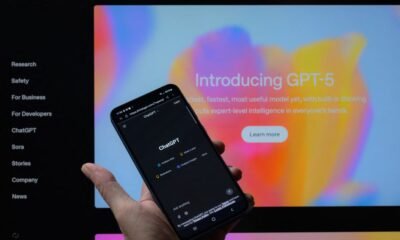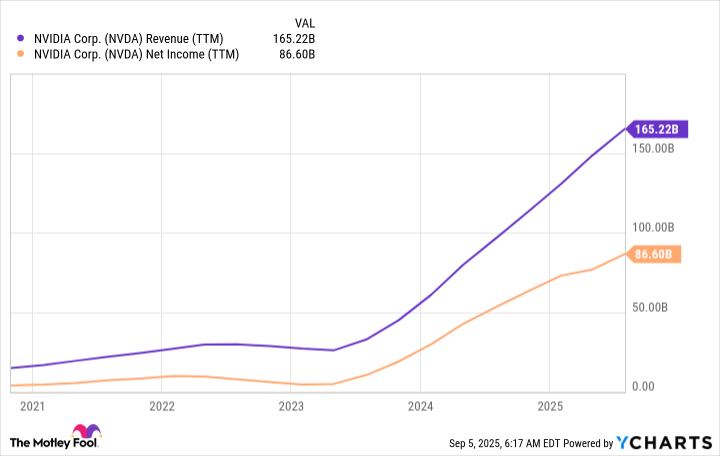AI Research
Quantum Sensors Market Outlook: Recent News & Growth Forecast 2025-2033

Market Overview:
According to IMARC Group’s latest research publication, “Quantum Sensors Market Report by Product (Atomic Clocks, Magnetic Sensors, PAR Quantum Sensors, Gravity Sensors), Application (Military and Defense, Automotive, Agriculture, Oil and Gas, Healthcare, and Others), and Region 2025-2033“, the global quantum sensors market size reached USD 575 Million in 2024. Looking forward, IMARC Group expects the market to reach USD 976 Million by 2033, exhibiting a growth rate (CAGR) of 6% during 2025-2033.
This detailed analysis primarily encompasses industry size, business trends, market share, key growth factors, and regional forecasts. The report offers a comprehensive overview and integrates research findings, market assessments, and data from different sources. It also includes pivotal market dynamics like drivers and challenges, while also highlighting growth opportunities, financial insights, technological improvements, emerging trends, and innovations. Besides this, the report provides regional market evaluation, along with a competitive landscape analysis.
How AI is Reshaping the Future of Quantum Sensors Market
- Advanced AI algorithms are revolutionizing quantum sensor capabilities by enabling intelligent signal processing and noise reduction, with machine learning models now capable of distinguishing quantum signals from environmental interference at unprecedented accuracy levels. This technological fusion allows quantum sensors to operate effectively in real-world conditions that previously rendered them impractical for commercial applications.
- Machine learning systems are enhancing sensor calibration and drift compensation mechanisms, enabling quantum sensors to maintain their exceptional sensitivity over extended periods without manual intervention. AI-powered predictive maintenance systems can now anticipate sensor performance degradation and automatically adjust parameters, ensuring consistent measurement quality across diverse deployment scenarios.
- Real-time AI processing transforms quantum sensor data into actionable intelligence for autonomous systems, particularly in navigation applications where GPS signals are unavailable or unreliable. These AI-enhanced quantum sensors provide centimeter-level positioning accuracy for autonomous vehicles, drones, and underground exploration equipment, opening new possibilities for precision applications.
- Strategic AI partnerships are accelerating quantum sensor commercialization, with tech giants investing heavily in AI-quantum sensor hybrid systems for next-generation applications. Major technology companies are developing integrated solutions that combine quantum sensing hardware with AI-driven analytics platforms, making sophisticated quantum measurement capabilities accessible to non-expert users.
- Predictive analytics and AI-driven optimization are transforming manufacturing processes for quantum sensors, enabling companies to achieve higher yields and lower production costs. AI algorithms optimize fabrication parameters in real-time, reducing defect rates while scaling production capacity to meet growing commercial demand across multiple industry sectors.
Get Your Free “Quantum Sensors Market” Sample PDF Report Now!
Key Trends in the Quantum Sensors Market
- Defense and security applications dominate the market landscape, capturing the largest application segment as military organizations worldwide invest in quantum sensing technologies for enhanced navigation, communication security, and threat detection capabilities. These sensors provide unprecedented sensitivity for detecting submarines, aircraft, and underground installations while operating in GPS-denied environments.
- Magnetometers lead the technology segment transformation, representing the fastest-growing category as industries discover new applications for ultra-sensitive magnetic field detection. Modern quantum magnetometers can detect magnetic signatures from buried objects, brain activity for medical diagnosis, and mineral deposits for geological exploration with sensitivity levels impossible to achieve with conventional sensors.
- Healthcare applications drive significant market expansion, with quantum sensors enabling revolutionary advances in medical imaging, drug discovery, and early disease detection. Brain imaging systems using quantum magnetometers can now detect neural activity with millimeter precision, while quantum-enhanced MRI machines reduce scan times significantly while improving image quality.
- Ground-based platforms maintain market leadership, accounting for 54% of installations as research laboratories, telecommunications facilities, and industrial plants adopt quantum sensing technologies for precision measurements. These stationary applications benefit from controlled environments that maximize sensor performance while providing stable power and maintenance access.
- Automotive sector emerges as a rapidly growing application area, driven by autonomous vehicle development requiring precise navigation and obstacle detection capabilities. Quantum sensors enable vehicles to navigate accurately in tunnels, urban canyons, and other challenging environments where traditional GPS systems fail to provide reliable positioning information.
Growth Factors in the Quantum Sensors Market
- Government investment momentum reaches unprecedented levels, with global public funding exceeding USD 44.5 billion for quantum technologies, including substantial allocations for quantum sensor development and deployment. The United States, European Union, China, and other major economies are establishing national quantum initiatives that specifically target sensor commercialization for strategic applications.
- Technological advancement breakthroughs are making quantum sensors more practical and cost-effective for commercial use, with recent innovations reducing size, power consumption, and operational complexity while maintaining exceptional sensitivity. New fabrication techniques enable mass production of quantum sensor components, driving down costs and enabling broader market adoption across diverse industries.
- Market investment surge demonstrates strong confidence in quantum sensing potential, with venture capital funding reaching approximately USD 2 billion in quantum technologies, including significant investments in sensor development companies. This financial backing enables startups and established companies to accelerate research, expand manufacturing capacity, and bring innovative quantum sensing solutions to market.
- Industrial demand expansion creates massive opportunities across multiple sectors, as companies recognize quantum sensors’ ability to solve previously intractable measurement challenges. Oil and gas exploration, mineral prospecting, construction monitoring, and precision manufacturing all benefit from quantum sensors’ unmatched sensitivity and accuracy capabilities.
- Technology integration advantages reshape measurement possibilities, as quantum sensors combine with artificial intelligence, edge computing, and wireless communication systems to create intelligent sensing networks. These integrated solutions provide real-time data analysis and automated decision-making capabilities that transform how industries approach monitoring and control applications.
Ask analyst of customized report: https://www.imarcgroup.com/request?type=report&id=5458&flag=E
Leading Companies Operating in the Global Quantum Sensors Market Industry:
- AOSense Inc.
- Aprogen Technologies
- Campbell Scientific Inc.
- GWR Instruments Inc.
- ID Quantique SA
- LI-COR Inc.
- Lockheed Martin Corporation
- M Squared Lasers Limited
- Muquans
- Robert Bosch GmbH
- Rigetti Computing
- SBQuantum
- Tiger Optics LLC
- Vector Atomic
Quantum Sensors Market Report Segmentation:
Breakup by Technology:
- Atomic Clocks
- Magnetometers
- Gravimeters
- Others
Breakup by Application:
- Defense
- Automotive
- Healthcare
- Energy & Power
- Construction & Mining
- Others
Breakup by Platform:
Regional Insights:
- North America (United States, Canada)
- Asia Pacific (China, Japan, India, South Korea, Australia, Indonesia, Others)
- Europe (Germany, France, United Kingdom, Italy, Spain, Others)
- Latin America (Brazil, Mexico, Others)
- Middle East and Africa
Recent News and Developments in Quantum Sensors Market
- Q1 2025: The quantum technology sector recorded USD 1.25 billion in investment funding, marking a 125% surge compared to previous periods, with significant portions allocated to quantum sensor development and commercialization efforts. This funding wave demonstrates growing investor confidence in quantum sensing applications across multiple industries.
- 2024: Government backing reached unprecedented levels with USD 44.5 billion in cumulative public funding for quantum technologies, including USD 3.1 billion added specifically for quantum sensor research and development initiatives. Major economies are establishing dedicated quantum sensing programs to maintain technological leadership in this critical field.
- April 2024: Quantum Machines announced a strategic partnership with Hamamatsu to integrate fast ORCA-Quest camera technology with sophisticated OPX quantum controllers, creating advanced quantum sensing solutions for research and industrial applications. This collaboration demonstrates growing integration between quantum hardware and classical instrumentation systems.
- 2025: Australia announced a USD 620 million investment package for quantum technology development, including substantial funding for quantum sensor applications in mining, defense, and environmental monitoring sectors. This investment represents one of the largest national commitments to quantum sensing commercialization globally.
Research Methodology:
The report employs a comprehensive research methodology, combining primary and secondary data sources to validate findings. It includes market assessments, surveys, expert opinions, and data triangulation techniques to ensure accuracy and reliability.
Note: If you require specific details, data, or insights that are not currently included in the scope of this report, we are happy to accommodate your request. As part of our customization service, we will gather and provide the additional information you need, tailored to your specific requirements. Please let us know your exact needs, and we will ensure the report is updated accordingly to meet your expectations.
About Us:
IMARC Group is a global management consulting firm that helps the world’s most ambitious changemakers to create a lasting impact. The company provide a comprehensive suite of market entry and expansion services. IMARC offerings include thorough market assessment, feasibility studies, company incorporation assistance, factory setup support, regulatory approvals and licensing navigation, branding, marketing and sales strategies, competitive landscape and benchmarking analyses, pricing and cost research, and procurement research.
Contact Us:
IMARC Group
134 N 4th St. Brooklyn, NY 11249, USA
Email: [email protected]
Tel No:(D) +91-120-433-0800
United States: +1-201-971-6302
AI Research
Albania’s leader says his new Cabinet includes an AI ‘minister’ to fight corruption

TIRANA, Albania — Albania’s leader said Friday his new cabinet will include an artificial intelligence “minister” that will be in charge of running public funding projects and fighting corruption in public tenders.
Prime Minister Edi Rama said Diella, whose name means “Sun” in Albanian, is a “member of the Cabinet who is not present physically but has been created virtually from artificial intelligence.”
Rama said Diella would help ensure that “public tenders will be 100% free of corruption.”
Diella was launched earlier this year as a virtual assistant on the e-Albania public service platform, where she helps users navigate the site while wearing traditional Albanian folk costume.
Rama’s Socialist Party secured a fourth consecutive term after winning 83 of the 140 Assembly seats in the May 11 parliamentary elections. The party can govern alone and pass most legislation, but it needs a two-thirds majority, or 93 seats, to change the Constitution.
The Socialists have said it can deliver EU membership for Albania in five years, with negotiations concluding by 2027. The pledge has been met with skepticism by the Democrats, who contend Albania is far from prepared.
The conservative Democratic Party-led coalition, headed by former prime minister and President Sali Berisha, won 50 seats. The party has not accepted the official election results, claiming irregularities, but its members participated in the new parliament’s inaugural session. The remaining seats went to four smaller parties.
Legal experts say more work may be needed to establish Diella’s official status.
Corruption has remained a top issue in the Western Balkan country since the fall of the communist regime in 1990.
Parliament began the process to swear in new lawmakers Friday. Later in the day, lawmakers are expected to elect a new speaker and deputies and formally present Rama’s new cabinet.
AI Research
Is AI changing our language? – Computerworld

Is AI changing our language? Computerworld
Source link
AI Research
Prediction: This Unstoppable Artificial Intelligence (AI) Stock Will Be the World’s First $10 Trillion Company by 2030

Nvidia’s projected growth allows it to easily become a $10 trillion business by 2030.
Currently, Nvidia (NVDA) is the world’s largest company, with a market cap of $4.2 trillion. So, predicting that a stock will reach a $10 trillion market cap by 2030 is daunting. However, I think that Nvidia is up to the task, as it’s slated to capitalize on massive and growing AI computing capacity.
As AI spending rises, so will Nvidia’s stock. Companies are a long way from completing the buildout of necessary AI computing power, and this demand is what will drive Nvidia to become a $10 trillion company by 2030.
Image source: Getty Images.
The AI hyperscalers are still ramping up their data center spending
Nvidia makes graphics processing units (GPUs), which are the computing muscle behind nearly every AI model you can use today. They possess a unique attribute that enables them to process multiple calculations in parallel, providing superior computing power compared to traditional computing devices. They can also be connected in clusters to amplify this effect, which is why you hear about data centers with hundreds of thousands of GPUs.
2025 was a record-setting year for data center capital expenditures, and that trend appears to be continuing. Many AI hyperscalers have already warned investors that spending in 2026 will be even greater than in 2025, which also indicates further growth beyond 2026.
Most data centers take several years to complete construction, so the money spent in 2025 to purchase land, design the facility, and initiate construction will translate into these clients purchasing Nvidia GPUs in 2026 or 2027. So, whenever you hear an AI hyperscaler announce that they’re building a facility in a location, it’s safe to assume that Nvidia’s growth horizon was extended at least another two or three years.
This jives with what Nvidia’s management has told investors during various conference calls. In the second quarter, they estimated that the big four AI hyperscalers will spend around $600 billion on data center capital expenditures. However, they expect that figure to rise to $3 trillion to $4 trillion when all customers worldwide are included. With Nvidia retaining an estimated 35% of this data center spend, it’s slated to capitalize on massive growth during the next few years.
This is the fuel that Nvidia needs to reach a $10 trillion market cap, and I won’t be surprised if Nvidia eclipses this monumental threshold by 2030.
Nvidia could be a much larger company than just $10 trillion
Using the bottom end of the estimated range, $3 trillion, and dropping Nvidia’s take to 30% to bake in a bit of conservatism, indicates Nvidia would generate $900 billion in revenue by 2030. If Nvidia maintains its 50% profit margin, that would translate into net income of $450 billion by 2030. Over the past 12 months, Nvidia has generated $165 billion in revenue and $87 billion in profits, indicating a substantial increase.
NVDA Revenue (TTM) data by YCharts
But are those figures enough to make Nvidia a $10 trillion company? Remember, this is only data center revenue, not any revenue the company generates from other business pursuits. Therefore, the actual revenue and profit totals are likely to be significantly higher.
Even only considering projected data center growth, it’s still sufficient to reach $10 trillion for Nvidia.
If we assign Nvidia a price-to-earnings (P/E) ratio of 30 times earnings, a reasonable price tag considering Nvidia’s growth and importance, that would indicate that Nvidia’s stock could be worth $13.5 trillion by 2030. That’s far above the $10 trillion threshold, and that only includes the data center business. Additionally, this was due to Nvidia losing some of its share in the spending pie and the lower end of Nvidia’s projection.
As a result, I’m confident that Nvidia can easily pass the $10 trillion threshold by 2030, making it a no-brainer buy today.
-

 Business2 weeks ago
Business2 weeks agoThe Guardian view on Trump and the Fed: independence is no substitute for accountability | Editorial
-
Tools & Platforms1 month ago
Building Trust in Military AI Starts with Opening the Black Box – War on the Rocks
-

 Ethics & Policy2 months ago
Ethics & Policy2 months agoSDAIA Supports Saudi Arabia’s Leadership in Shaping Global AI Ethics, Policy, and Research – وكالة الأنباء السعودية
-

 Events & Conferences4 months ago
Events & Conferences4 months agoJourney to 1000 models: Scaling Instagram’s recommendation system
-

 Jobs & Careers2 months ago
Jobs & Careers2 months agoMumbai-based Perplexity Alternative Has 60k+ Users Without Funding
-

 Podcasts & Talks2 months ago
Podcasts & Talks2 months agoHappy 4th of July! 🎆 Made with Veo 3 in Gemini
-

 Education2 months ago
Education2 months agoVEX Robotics launches AI-powered classroom robotics system
-

 Education2 months ago
Education2 months agoMacron says UK and France have duty to tackle illegal migration ‘with humanity, solidarity and firmness’ – UK politics live | Politics
-

 Funding & Business2 months ago
Funding & Business2 months agoKayak and Expedia race to build AI travel agents that turn social posts into itineraries
-

 Podcasts & Talks2 months ago
Podcasts & Talks2 months agoOpenAI 🤝 @teamganassi






















